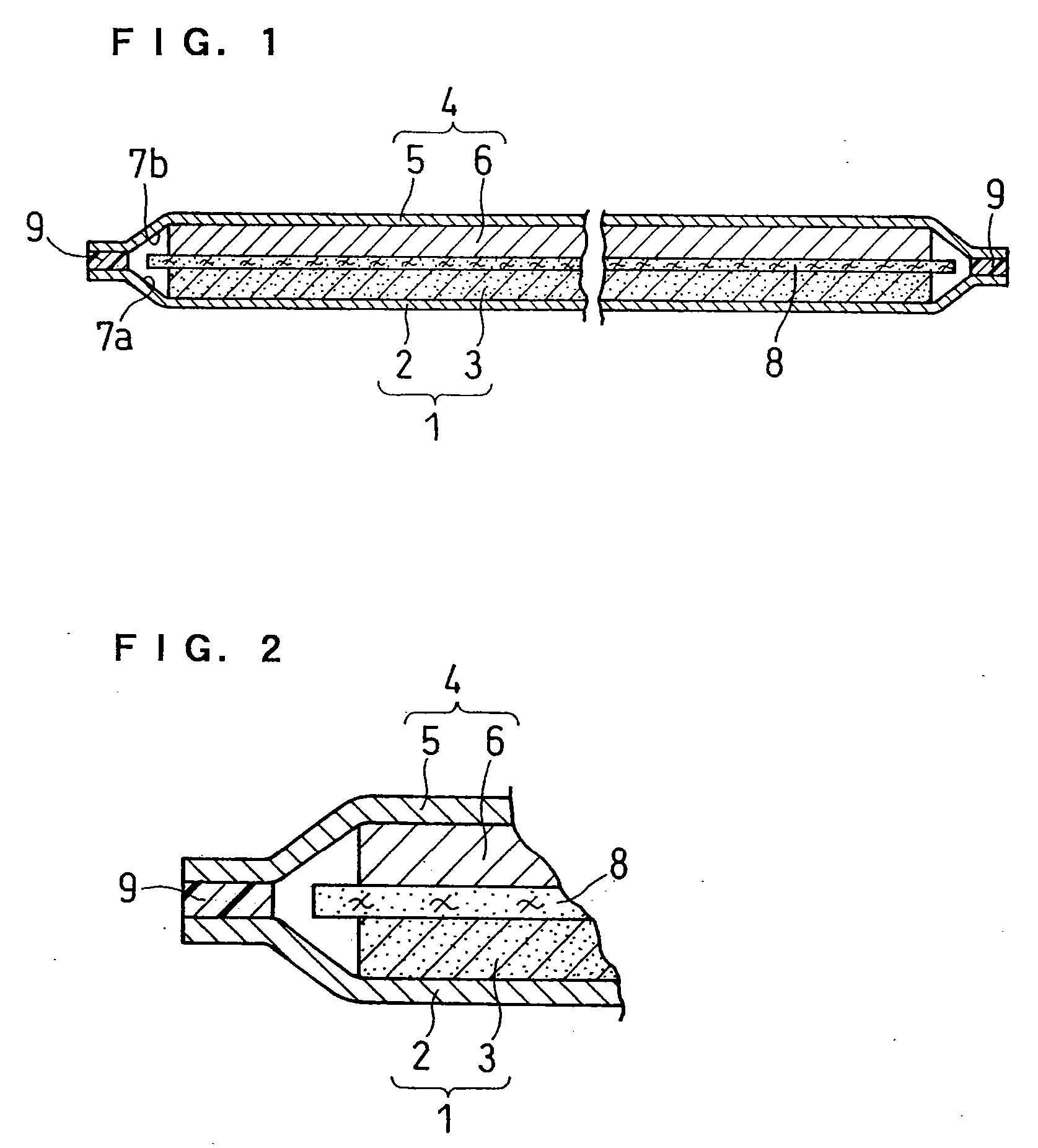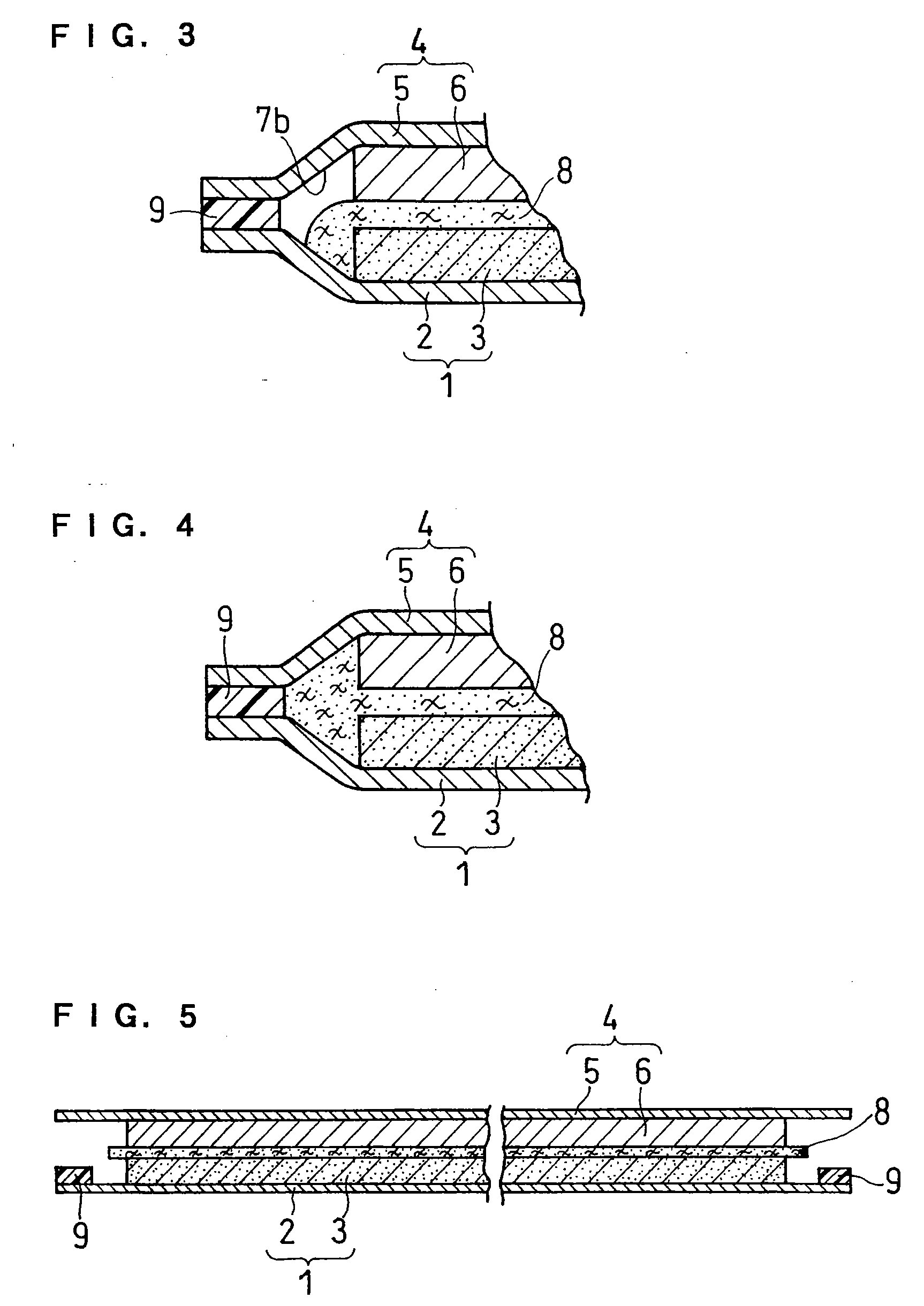Method for producing non-aqueous electrolyte secondary battery
a technology of secondary batteries and electrolyte, which is applied in the direction of cell components, sustainable manufacturing/processing, final product manufacturing, etc., can solve the problems of limited reduction of thickness and energy density of batteries, difficult to design thin batteries, and inability to meet the needs of use, etc., to achieve simplified packaging, high energy density, and easy to use
- Summary
- Abstract
- Description
- Claims
- Application Information
AI Technical Summary
Benefits of technology
Problems solved by technology
Method used
Image
Examples
example 1
[0115] (i) Production of Positive Electrode Plate
[0116] LiCoO2 as a positive electrode active material, carbon powder as a conductive agent, a polymer material as a starting material of a polymer electrolyte, and N-methyl-2-pyrrolidone were mixed to obtain a positive electrode mixture. As the above-described polymer material, a copolymer (hereinafter, referred to as P(VDF-HFP)) having 90 wt % of vinylidene fluoride units and 10 wt % of hexafluoropropylene units was used. The weight ratio of the active material: the conductive agent: P(VDF-HFP) was set to 100:5:8.
[0117] A band-shaped aluminum film having a width of 150 mm and a thickness of 30 μm was used as a current collector.
[0118] By a coating process using an intaglio plate, the positive electrode mixture was discontinuously applied onto one side of the above-described band-shaped current collector to form a plurality of positive electrode active material layers, thereby producing a positive electrode plate assembly as shown ...
example 2
[0131] An assembly of batteries B each having a completely sealed structure was produced in the same manner as in Example 1, except that the thickness of each of the positive electrode active material layer and the negative electrode active material layer was set to 240 μm.
example 3
[0132] An assembly of batteries C each having a completely sealed structure was produced in the same manner as in Example 1, except that the thickness of each of the positive electrode active material layer and the negative electrode active material layer was set to 360 μm.
PUM
 Login to View More
Login to View More Abstract
Description
Claims
Application Information
 Login to View More
Login to View More - R&D
- Intellectual Property
- Life Sciences
- Materials
- Tech Scout
- Unparalleled Data Quality
- Higher Quality Content
- 60% Fewer Hallucinations
Browse by: Latest US Patents, China's latest patents, Technical Efficacy Thesaurus, Application Domain, Technology Topic, Popular Technical Reports.
© 2025 PatSnap. All rights reserved.Legal|Privacy policy|Modern Slavery Act Transparency Statement|Sitemap|About US| Contact US: help@patsnap.com



